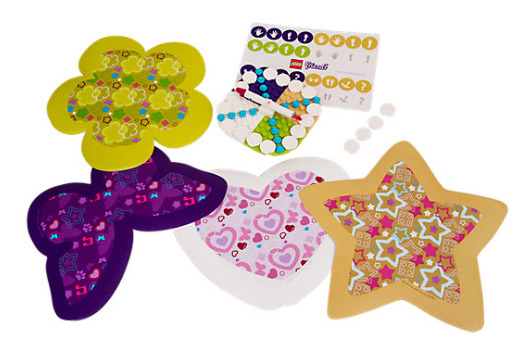 |
| Animal Soup - A figure ground game featuring flip books. |
The whimsical, animal-themed flip books in Animal Soup make this figure ground game different from any other I've seen. Animal Soup features four animals (monkey, fish, cow, pig), one animal per book.
Each book page is cut across the middle, allowing you to change just the top or bottom of each character. Each
flip book has four top halves and four bottom halves. Each flip book half also has a colored
tab projecting off the edge of each page. The colors of these tabs match
the colors on the die. Each half changes
something different about the animal, such as adding hats, scarves,
necklaces, hair, sunglasses, etc.
The soup spoons and bowl are hard plastic. The die is large and lightweight. There are four sides with a single color, one side with all four colors, and one side with a zany eye.
One thing I like about this game is that there is no downtime, everyone plays on every turn.
Object:
Collect the most tokens by being the first to spot the animal on the game board that matches the animal in your flip book. Each time you do so you will win one token. When the tokens have all been collected, the person with the most tokens wins the game.
Set up:
Place the board in the middle of the players, place the soup bowl in the middle of the board and put the 15 round animal tokens in the bowl. Give each player one flip book and a matching color spoon.
Play:
Players take turns. Start each turn by throwing the die and following these instructions:
- A side with a solid color comes up: Each player chooses a tab of that color in his book, flips his book open, and immediately starts looking for the animal on the game board that matches the one he is looking at in his book.The first player to spot his animal places his spoon into the soup bowl, points to the matching animal on the board, and yells "Animal Soup"! Other players stop looking, verify that he has found a match, and if so, that player (winner of the round) collects a token from the soup bowl. Each time a single color comes up, each player can turn a page from the left to the right, or from the right to the left, his choice.
- The side with all four colors come up: The person who threw the die gets to choose the color everyone will flip.
- The zany eyeball comes up: All the flip books are exchanged between players.
Play until all the spoons have been claimed from the bowl and announce the winner.
 |
| A portion of the board. |
Try this:
Skip the die and the tokens, just open a book and look for the animal. Then flip the top or bottom and find the next one, etc.
Teach the player to look for one attribute at a time. For instance, suppose you are looking for a monkey with a crown, sunglasses and necklace. As you scan the board, stop only at the monkeys. Then check the hat. If it's not the same, then move one. If it is then look for sunglasses. If it's not the same, move on. If it is, then look for a necklace.
Scan the board by the rings if the player cannot scan by sections.
Play I SPY just using the board. One person describes an animal he is looking at and the other player(s) search to find it.
- Count the animals by attribute. For instance, go around the outer circle and count all the animals with a green hat. Go around the next inner circle and count all the animals wearing a necklace, etc.
- Work
on visual discrimination, figure ground, visual closure, visual memory,
working memory, visual scanning, manual dexterity, finger isolation,
socialization skills, process skills, play and leisure exploration and
participation
In the box: Game board, 4 flip books, 4 soup spoons, 1 soup bowl, 15 animal tokens, 1 die






